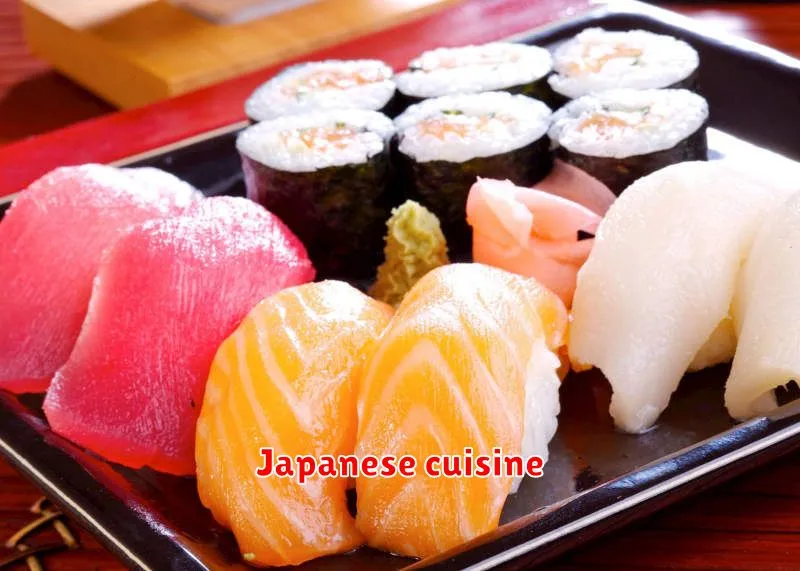Ready for a culinary adventure? Japan, a land of unique and delicious food, offers a plethora of foodie destinations beyond the usual tourist hotspots. From the freshest sushi in Tokyo’s Tsukiji outer market to the incredible ramen in Hakata, this article unveils 10 unique foodie destinations in Japan that will tantalize your taste buds and leave you craving more. Get ready to explore hidden gems, experience authentic Japanese cuisine, and discover your new favorite Japanese food experiences!
Tsukiji Fish Market
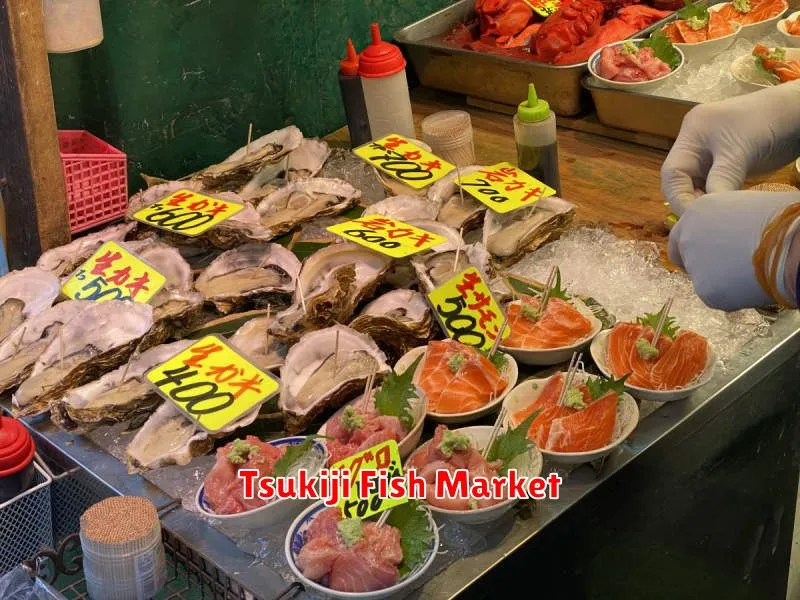
No trip to Japan is complete without a visit to the iconic Tsukiji Fish Market. While the inner wholesale market relocated in 2018, the outer market remains a vibrant hub of culinary activity. This bustling area offers a sensory overload of sights, sounds, and, most importantly, incredible tastes.
Fresh seafood is the star of the show. From glistening tuna auctions (though you’ll need to book a tour well in advance to witness these) to mountains of glistening shellfish and an array of exotic fish, the market offers a spectacular display of Japan’s bounty.
Beyond the raw ingredients, the outer market is packed with restaurants and stalls serving up delicious and affordable meals. Enjoy fresh sushi, expertly prepared ramen, or savor the unique flavors of tamagoyaki (sweet rolled omelet) – all made with the freshest ingredients sourced right from the market.
Don’t miss the opportunity to sample various street food delights, from savory snacks to sweet treats. It’s an unparalleled culinary experience that captures the essence of Japanese cuisine and its commitment to quality and freshness. Tsukiji offers a truly unforgettable foodie adventure.
Dotonbori, Osaka
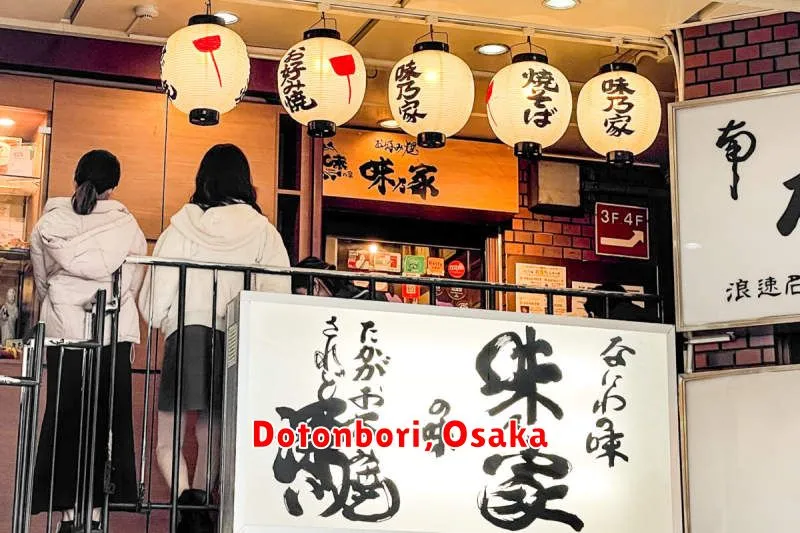
Dotonbori in Osaka is a vibrant and iconic entertainment district, renowned for its dazzling neon lights and, most importantly, its incredible street food scene. It’s a foodie paradise, offering a truly unique Japanese culinary experience.
Expect a sensory overload! The area is packed with takoyaki stalls, serving up golden balls of octopus-filled batter, alongside vendors selling okonomiyaki (savory pancakes), kushikatsu (deep-fried skewers), and countless other local specialties. The sheer variety is astonishing.
Beyond the classic street food, Dotonbori boasts numerous restaurants offering everything from high-end sushi to casual ramen. The atmosphere is electric, with a constant buzz of activity and the aroma of delicious food hanging in the air. It’s a must-visit for any food lover exploring Japan.
Don’t miss the chance to try the local delicacies and soak up the electric atmosphere of this unforgettable foodie destination. It’s a truly unforgettable experience.
Kobe for Kobe Beef
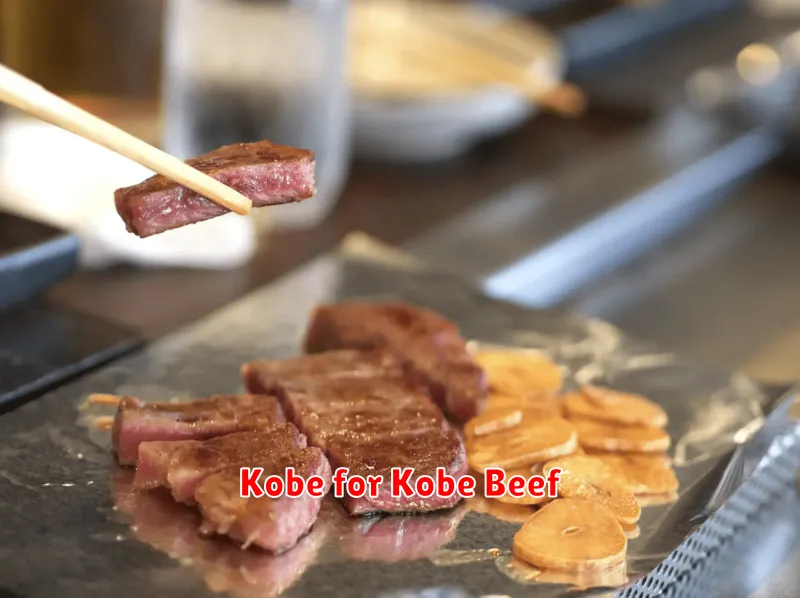
Kobe, a city in Hyogo Prefecture, is synonymous with the world-renowned Kobe beef. This exquisitely marbled wagyu beef is known for its unparalleled tenderness, rich flavor, and melt-in-your-mouth texture.
A trip to Kobe isn’t complete without indulging in this culinary masterpiece. Numerous restaurants, from high-end establishments to more casual eateries, offer a range of Kobe beef dishes, from delicate sushi to sumptuously grilled steaks. The experience extends beyond just the taste; the careful preparation and presentation add to the overall luxurious feel.
Beyond the restaurants, consider visiting a butcher shop to see the quality of the beef firsthand. Many shops offer small tastings, allowing you to appreciate the unique flavor profile before committing to a full meal. Exploring Kobe’s markets might also reveal hidden gems and local delicacies to pair with your Kobe beef experience.
Remember to book your Kobe beef dining experience in advance, especially during peak season. This ensures you won’t miss out on savoring this truly unique and unforgettable Japanese delicacy.
Nishiki Market, Kyoto
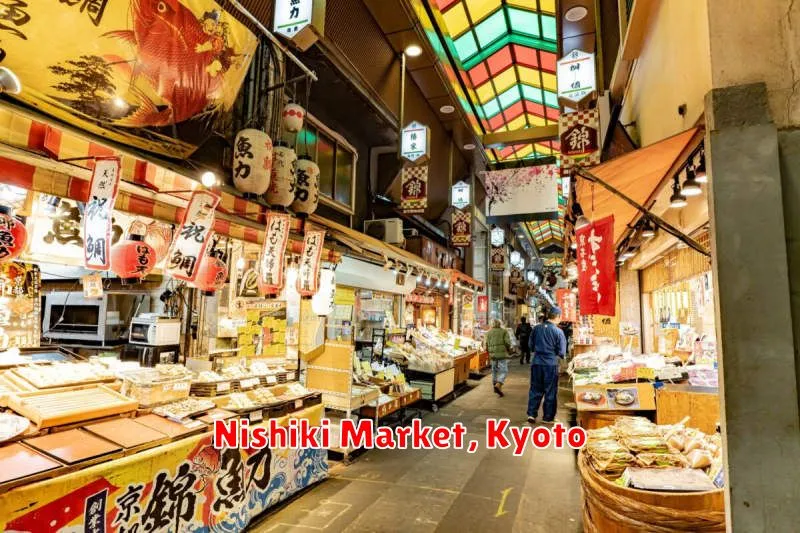
Nishiki Market, often called “Kyoto’s Kitchen,” is a must-visit for any foodie exploring Japan. This bustling market, stretching several blocks, is a sensory overload of sights, sounds, and incredible smells.
Here, you’ll discover a vast array of unique culinary delights. From pickled vegetables and fresh seafood to exotic fruits and traditional Japanese sweets, there’s something to tantalize every taste bud. Don’t miss the chance to sample local specialties like tsukemono (pickles), konnyaku (konjac jelly), and freshly grilled seafood.
The market’s atmosphere is vibrant and energetic. Small stalls overflow with colorful produce and tempting treats, while friendly vendors eagerly share their culinary expertise. It’s a fantastic place to interact with locals and experience authentic Kyoto culture. Beyond the food, you’ll find charming shops selling kitchenware and other local crafts.
Allow ample time to explore the market’s many hidden gems; it’s easy to spend hours wandering its winding lanes and sampling the diverse offerings. Remember to bring your appetite – and perhaps a small bag to carry your delicious purchases!
Hokkaido’s Fresh Seafood
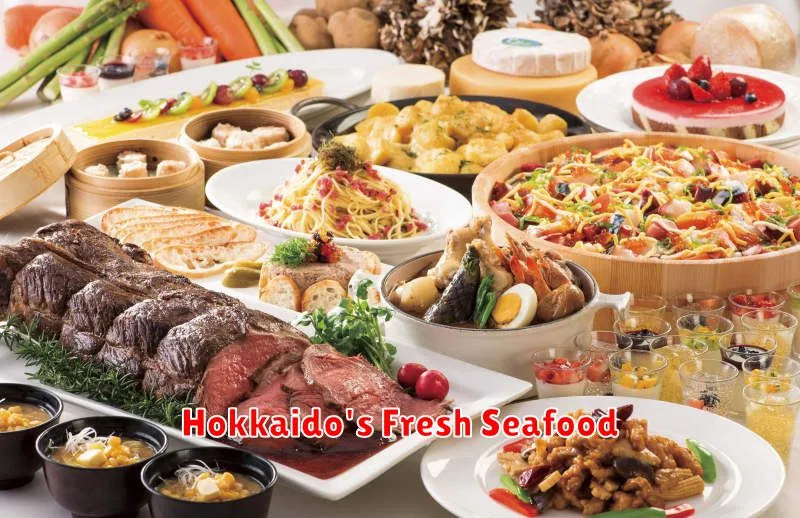
Hokkaido, Japan’s northernmost island, is a seafood lover’s paradise. The cold, nutrient-rich waters surrounding the island are teeming with a vast array of marine life, resulting in incredibly fresh and flavorful seafood.
Uniquely diverse catches abound, from succulent scallops and plump crabs to delectable uni (sea urchin) and the prized king crab. Many restaurants offer kaisen-don (seafood rice bowls) showcasing the day’s freshest catch, a truly unforgettable culinary experience.
Markets like Sapporo’s bustling wholesale fish market provide a fascinating glimpse into the industry and offer opportunities to sample various delicacies. Don’t miss the chance to try ikizukuri, where raw fish is prepared right before your eyes.
Beyond the markets and restaurants, experiencing Hokkaido’s seafood culture goes beyond just dining. You can join fishing tours or visit aquaculture farms to learn about the sustainable practices that ensure the quality of the seafood.
A culinary adventure awaits in Hokkaido. The freshness and quality of the seafood, combined with the region’s unique culinary traditions, make it an absolute must-visit destination for any serious foodie.
Okonomiyaki in Hiroshima
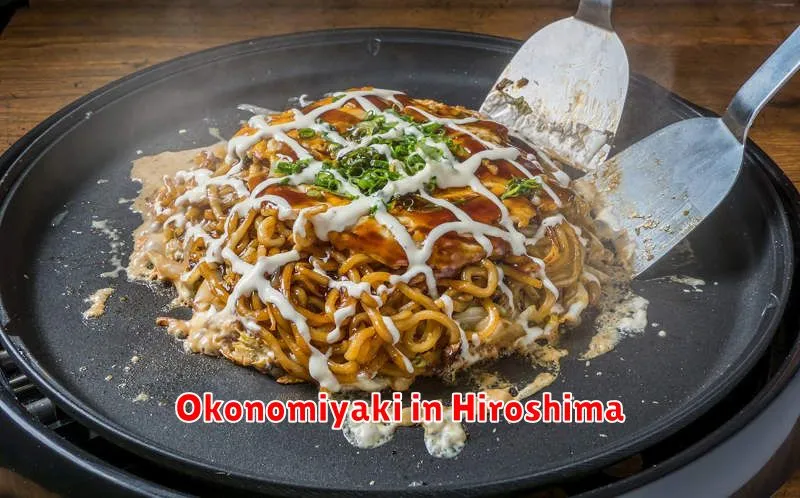
Hiroshima’s okonomiyaki is a culinary experience unlike any other in Japan. While the basic concept—savory pancake—remains the same, the Hiroshima style boasts a distinct layered construction.
Instead of a single, thick pancake, Hiroshima-style okonomiyaki is built in stages. First, a thin layer of batter is cooked, followed by cabbage, meat, and other toppings. Then, a layer of yakisoba noodles is added, before the whole creation is topped with a final layer of batter and finished with okonomiyaki sauce, mayonnaise, aonori (dried seaweed flakes), and bonito flakes.
This meticulous layering results in a more substantial and flavorful dish. The crispiness of the thin batter, the tender yakisoba, and the array of toppings create a symphony of textures and tastes that are uniquely Hiroshima.
Beyond the distinct preparation, many restaurants specialize in variations, offering unique ingredient combinations and cooking styles. Exploring the various okonomiyaki establishments in Hiroshima is a journey of culinary discovery in itself. It’s a must-try for any food enthusiast visiting Japan.
Fukuoka Ramen Stalls

Fukuoka, a city brimming with culinary delights, boasts a particularly vibrant ramen scene. Forget fancy restaurants; the real action happens at the numerous ramen stalls scattered throughout the city. These unassuming eateries offer an authentic taste of Hakata-style ramen, a rich and flavorful pork-bone broth often topped with thin noodles, chashu pork, and a sprinkle of green onions.
The experience itself is as much a draw as the ramen. Expect a bustling atmosphere, often filled with locals and a lively energy. Many stalls are small and intimate, offering a chance to observe the chefs’ precise techniques and the dedication to crafting each bowl. The quick service and affordable prices make it a perfect spot for a quick, delicious, and authentic meal.
Navigating the stalls can be part of the fun. Each stall often has its own unique style and subtle variations in broth and toppings, giving you a chance to sample different interpretations of this iconic dish. Don’t be afraid to venture off the beaten path and discover your own hidden gem amongst Fukuoka’s ramen havens. It’s an unforgettable culinary adventure.
Nagoya’s Hitsumabushi
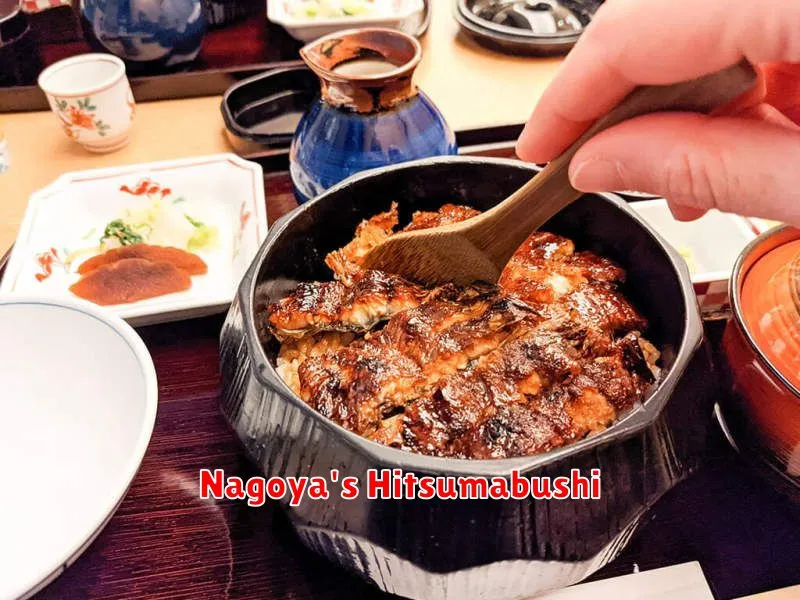
Nagoya, a vibrant city in central Japan, is renowned for its unique culinary offering: hitsumabushi. This isn’t your average eel dish; it’s a multi-stage culinary experience.
Hitsumabushi features grilled unagi (freshwater eel) served over rice in a lacquered box. The true magic lies in the four ways you can enjoy it. First, savor the unagi and rice in its purest form. Second, add some wasabi and green onions for a spicy kick. Third, mix in some dashi (broth) for a soup-like experience. Finally, and perhaps most uniquely, enjoy the remaining unagi and rice with tea for a delicate finish.
The preparation of hitsumabushi is an art form in itself, with chefs carefully grilling the eel to achieve that perfect balance of crispiness and tenderness. Finding a good hitsumabushi restaurant in Nagoya is easy, as countless establishments pride themselves on their versions of this regional specialty. A trip to Nagoya isn’t complete without indulging in this unforgettable culinary journey.
Takayama’s Morning Markets
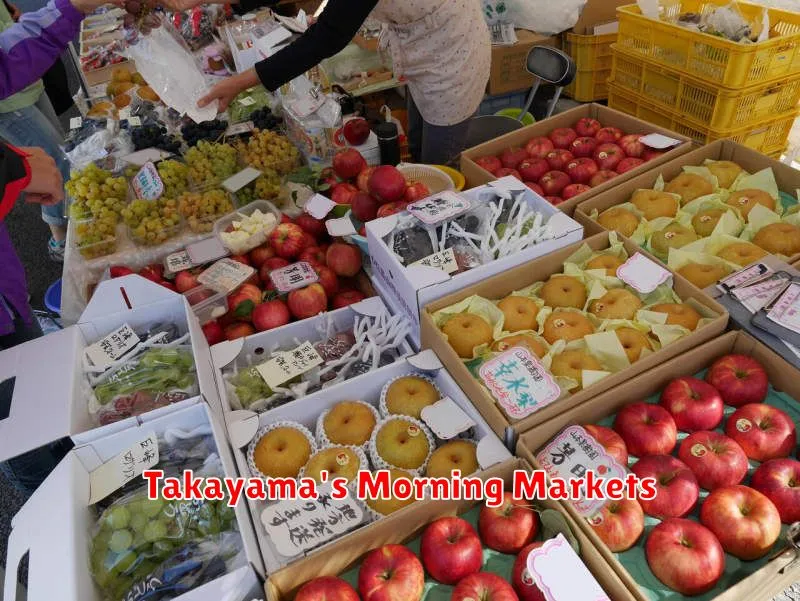
Nestled in the heart of the Japanese Alps, Takayama boasts two charming morning markets: the Miyagawa Morning Market and the Jinya-mae Morning Market. These aren’t your average farmer’s markets; they’re vibrant displays of local cuisine and craftsmanship.
The Miyagawa Morning Market, situated along the crystal-clear Miyagawa River, offers a picturesque setting to browse. Stalls overflow with fresh, seasonal produce, pickled vegetables, Hida beef delicacies, and local sweets. The atmosphere is lively and engaging, perfect for soaking up the authentic Takayama experience.
The Jinya-mae Morning Market, located near the old government building, presents a more traditional market feel. Here you’ll find a curated selection of local crafts, alongside regional specialties like handmade sake and preserved foods. It’s a great place to find unique souvenirs and sample some of the region’s best-kept culinary secrets.
Visiting Takayama’s morning markets is an absolute must for any foodie exploring Japan. The combination of fresh ingredients, local delicacies, and the vibrant atmosphere makes it an unforgettable experience. Remember to arrive early to fully appreciate the bustling energy and secure the best selection of goods!
Tokyo’s Michelin Restaurants
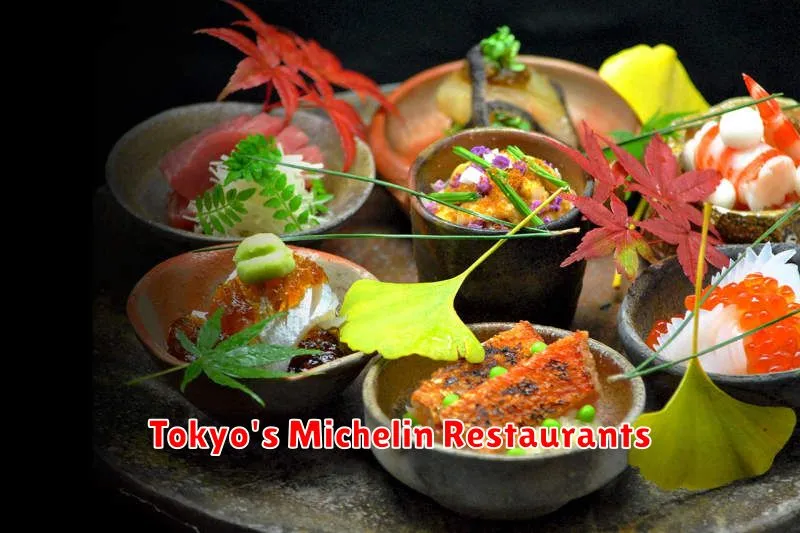
Tokyo boasts the highest number of Michelin-starred restaurants globally, a testament to its unparalleled culinary scene. From traditional kaiseki dinners to innovative sushi experiences and modern French gastronomy, Tokyo offers an incredibly diverse range of high-end dining options.
Exploring Tokyo’s Michelin-starred restaurants is an unforgettable culinary adventure. Expect impeccable service, exquisite presentations, and, of course, exceptional ingredients. Many restaurants emphasize seasonal ingredients, showcasing the best of Japan’s bounty. Reservations are essential, often weeks or even months in advance, highlighting the popularity and prestige of these establishments.
While the cost can be substantial, dining at a Michelin-starred restaurant in Tokyo is an experience that provides an unparalleled look into Japanese culinary artistry. It’s a chance to sample the meticulous preparation, the refined flavors, and the artistry that goes into each dish, making it a truly memorable highlight of any foodie’s trip to Japan.

